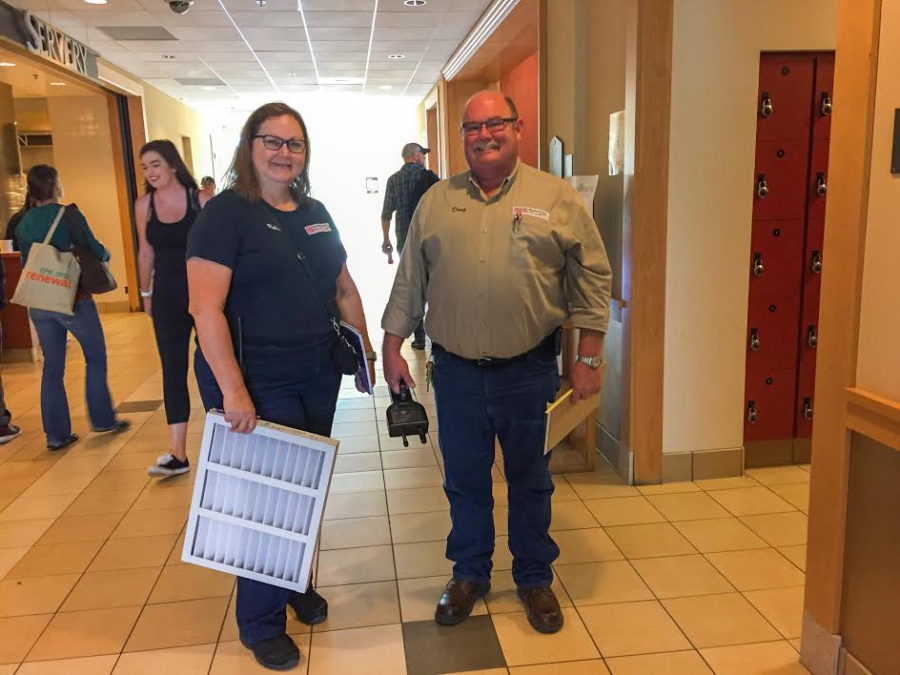An air quality consultant hired by Santa Rosa Junior College confirmed all SRJC facilities “look really good” compared to the recommended Air Quality Index (AQI) levels.
SRJC Facilities Operations responded quickly to shut off air handlers in the early stages of the wildfires, working hard to change each of them out prior to reopening the campus on Oct. 23.
In regards to the air quality within the buildings, Cal Division of Occupational Safety and Health (OSHA) consultant Wayne Hon from the Northern California Cal OSHA Office said, “The only way to find out how bad it is, is to take samples to see.”
This is something the SRJC environmental health and safety staff are currently doing. “The Junior College has been using an outside air quality consultant to monitor both inside and outside of buildings on campus since Oct. 15, and the air quality is way below Cal/OSHA regulatory levels,” said Doug Kuula, SRJC’s manager of environmental health and safety. “Environmental health and safety folks have been all over the district; there is no visible ash or residue in the locations where they have been and the rain took care of what was outside.”
Overall, it appears the SRJC Environmental Health and Safety are working overtime to provide students, staff and faculty with a sense of normalcy.
In regards to the air quality, SRJC student Celine Gossage said, “From what I have been able tell so far, I haven’t really noticed much. It hasn’t been too bad for me.”
The Environmental Protection Agency (EPA) recommends two key housekeeping methods to reduce the health risks from smoke. Occupants are advised to wipe and vacuum away dust particles from the fire with a damp cloth and use the Heating Ventilating and Air Conditioning (HVAC) system effectively. The EPA recommends that commercial HVAC systems be operated continuously while occupied to provide the minimum quantity of outdoor air for ventilation, as required by the building’s standards or building codes. It appears this is exactly what the SRJC facilities staff is doing. “My first class today was heavily air-conditioned so I didn’t notice anything too bad,” Gossage said.
If you have concerns about the health and safety on campus, contact SRJC Environmental Health and Safety at (707) 527-4803. For more information on the effects of wildfire smoke, check out the guide: Wildfire Smoke – A Guide for Public Health Officials at: https://www3.epa.gov/airnow/wildfire_may2016.pdf


